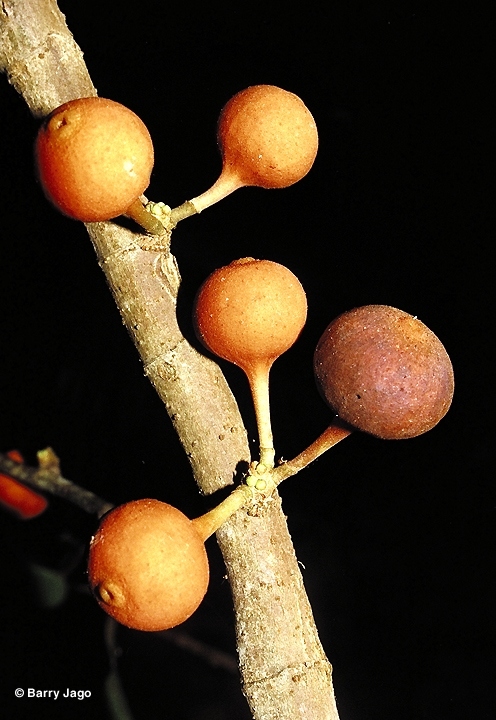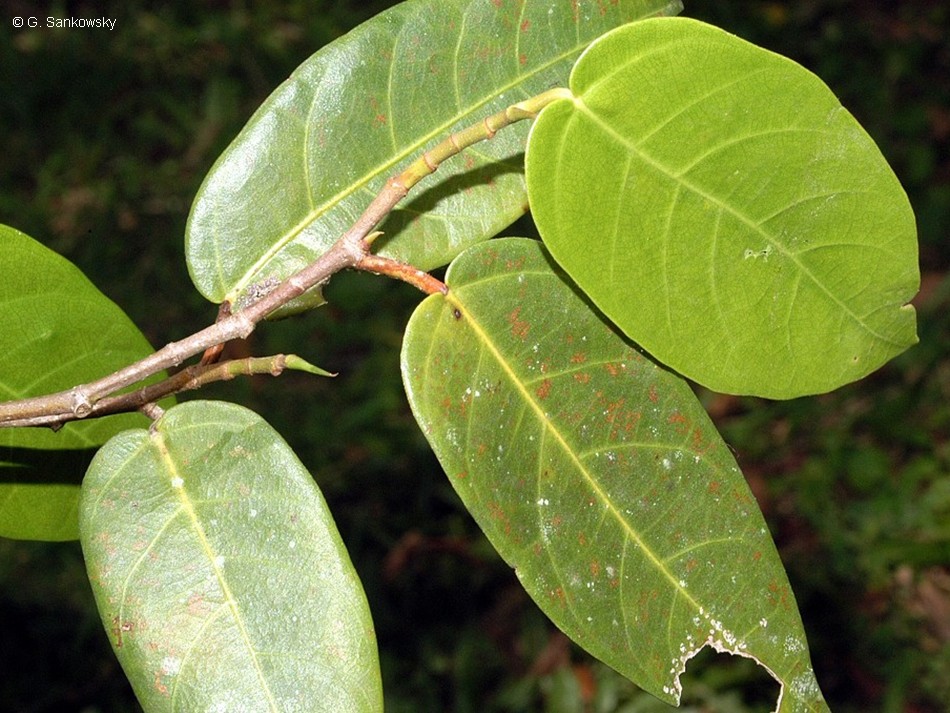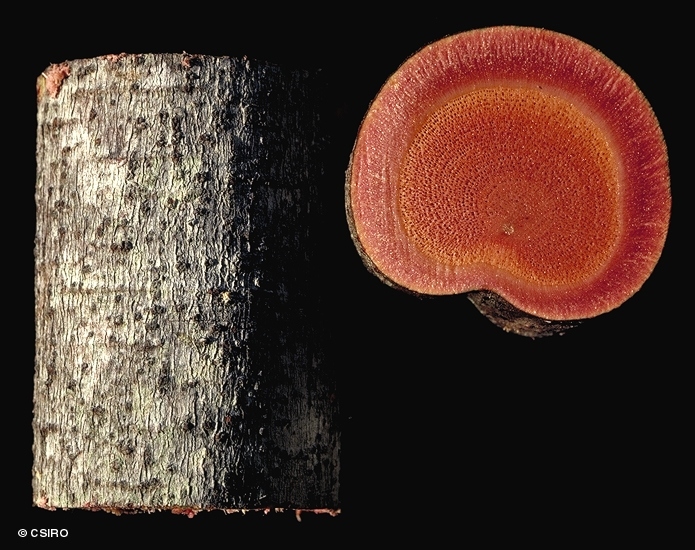Australian Tropical Rainforest Plants - Online edition
Ficus pantoniana King
Click/tap on images to enlarge

Figs. © Barry Jago

Leaves. © G. Sankowsky

Scale bar 10mm. © CSIRO

Vine stem bark and vine stem transverse section. © CSIRO
Family
King, G. (1887) Journal of the Asiatic Society of Bengal 55: 407. Type: New Guinea, H.O. Forbes, No. 185 ..
Common name
Fig; Fig, Climbing; Climbing Fig
Stem
Vine stem diameters to 6 cm recorded. Vascular rays visible in transverse sections of the bark.
Leaves
Flowers
Male flowers: Flowers produced towards the top of the fig among the bracts below the orifice. Male flowers normally produced when the figs are mature and seeds are ripe? Female flowers: Flowers mainly located in the basal part of the fig. Fig globular, about 1.2-1.5 cm diam. on a stalk about 6-11 mm long. Tepals about 0.4-0.5 mm long. Style and stigmas projecting beyond the tepals. Ovary enclosed in the tepals.
Fruit
Fruits pink.
Seedlings
Features not available.
Distribution and Ecology
Synonyms
Ficus pantoniana King var. pantoniana, The Gardens' Bulletin Singapore 18: 8(1960). Ficus nugentii Domin, Bibliotheca Botanica 89(4): 567(1921), Type: Kamerunga, J. L. Nugent; holo: BRI?. Ficus scandens var. australis F.M.Bailey, Queensland Agricultural Journal 1(5): 370(1897), Type: Range about Kamerunga, L.J. Nugent. Holo: BRI?.
RFK Code
2068
Copyright © CSIRO 2020, all rights reserved.

Web edition hosted at https://apps.lucidcentral.org/rainforest




